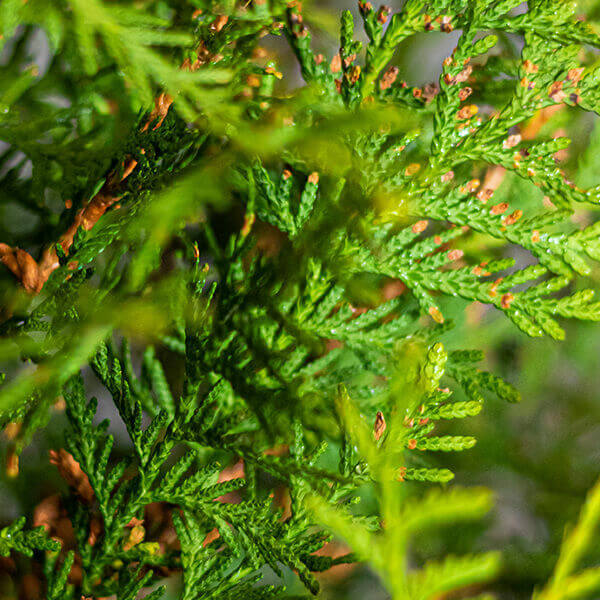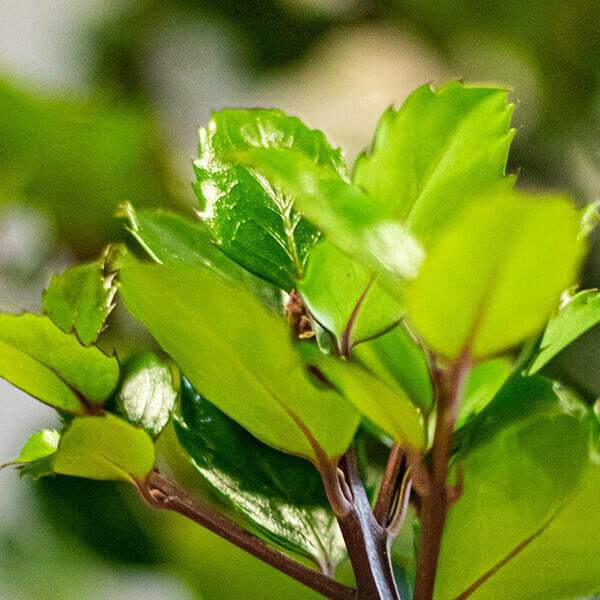Best Hedging Plants For Full Sun
Best Hedging Plants For Full Sun
Blog Article
Best Hedge Plants For Privacy
Improve your garden's allure with lavish hedge varieties such as Yew (Taxus), Thuja, Laurel, Photinia, and Bamboo, commemorated for their structural integrity and ecological advantages.
Yew and Thuja offer evergreen protection and winter durability, while Laurel uses rapid development and broad, aromatic leaves.
Photinia adds seasonal appeal with its lively red foliage, and Bamboo lends a low-maintenance, peaceful atmosphere.
These hedges improve air quality, lower noise, and produce tranquil, personal areas.
Proper planting, spacing, and upkeep make sure vigorous growth and eco-friendly consistency.
Explore how these rich ranges can raise your garden's beauty and well-being.
Key Takeaways
Change Your Garden With Lush Hedge Varieties
- Select Yew for its dense, evergreen growth and unequaled longevity.
- Choose Laurel for its fast development and broad leaves, making sure fast privacy.
- Choose Photinia for its dynamic seasonal foliage, which turns a striking dark red.
- Use Bamboo for a low-maintenance, winter-hardy hedge with visual appeal.
- Space plants 2-3 per meter and prune regularly for ideal growth and health.
Popular Hedge Plants
When transforming a garden with rich hedge ranges, it's vital to think about popular hedge plants such as Yew, Thuja, Laurel, and Photinia due to their special attributes and advantages.
Yew (Taxus) is extremely respected for its durability and thick, green growth, making it a prime option for withstanding landscapes.
Thuja is kept in mind for its evergreen foliage and robust winter season resilience.
Photinia adds seasonal vibrancy with red leaves that darken gradually, producing vibrant visual appeal.
Laurel provides quick growth and fragrant, broad leaves, perfect for fast personal privacy.
Additionally, Bamboo is an exceptional choice for atmosphere, providing a low-maintenance, winter-hardy choice that boosts the garden's visual with its elegant, swaying canes.
These selections deal with a variety of horticultural requirements and choices.
Benefits of Garden Hedges
Garden hedges offer a wide range of benefits, making them a valuable addition to any landscape. These natural barriers are economical to implement and provide considerable wind protection, enhancing air flow and contributing to noise decrease. The dense foliage of hedges like Thuja and Beech ensures personal privacy by obstructing presence, producing a remote and serene environment.
Hedges also play a crucial function in microclimate policy, offering a stable environment that cultivates plant growth and lessens temperature variations. Their elaborate leaf structures filter toxins, improving air quality and adding to a healthier garden environment.
Furthermore, hedges master noise reduction, absorbing and deflecting sound waves to lower ambient sound levels. This dual functionality of providing both visual and acoustic privacy boosts the general tranquility and visual appeal of any garden.
Planting and Upkeep Tips
For a successful hedge, careful preparation of the planting area is important. Make sure the soil has correct pH and drainage to support strong root development.
Area the plants properly for the chosen types. Water the hedge frequently during its preliminary growth stage, adjusting as required with seasonal changes.
Implement a methodical insect control and illness prevention method, using natural or chemical treatments when essential. Routinely examine for aphids, termites, and fungal infections.
Apply mulch to retain moisture and reduce weeds. Seasonal pruning promotes thick development and air circulation, essential for plant health.
Following these guidelines will help you cultivate a dynamic, properly maintained hedge that enhances the appeal of your garden.
Spacing and Cutting Guidelines
Spacing and Cutting Guidelines
Proper spacing and cutting are important for cultivating healthy, visually appealing hedges. Sufficient spacing guarantees each plant receives enough nutrients, light, and air flow.
Follow these standards for ideal hedge upkeep:
- Spacing: Position hedge plants 2-3 plants per meter to motivate robust development.
- Pruning Methods: Routine pruning is vital for keeping wanted hedge height and shape. Trim new growth in summer and cut down older wood throughout winter.
- Seasonal Care: Change cutting approaches and schedules according to seasonal requirements to guarantee plant health.
- Hedge Height: Routinely monitor and trim to keep the desired hedge height and accomplish consistent aesthetic appeals.
Adhering to these actions will guarantee your hedge prospers, improving both the appeal and functionality of your garden.
Picking the Right Hedge
Selecting the Right Hedge
Selecting the proper hedge includes evaluating aspects such as fully grown height, foliage density, and ecological durability. Effective hedge plant choice needs comprehending each types' development qualities and site-specific flexibility.
For example, Yew (Taxus) offers exceptional longevity and dense development, while Thuja is noteworthy for its winter durability. Furthermore, thinking about upkeep requirements is crucial; fast-growing types like Laurel or Privet need routine cutting, whereas low-maintenance choices like Bamboo or Ivy might be preferable for those looking for minimal upkeep.
Environmental aspects such as soil type, light availability, and wetness conditions should likewise guide the selection process. This mindful technique makes sure the selected hedges will flourish, offering both visual and functional advantages to the garden landscape.
Shipment and Planting Recommendations
To guarantee your hedge plants thrive, they ought to be delivered by specialized couriers and planted promptly upon arrival.
Follow these essential steps for successful planting:
- Soil Preparation: Enrich the soil with natural matter to improve drainage and nutrient material.
- Planting Depth: Create a trench twice the width and equivalent to the depth of the root ball.
- Watering Strategies: Water thoroughly after planting, keeping the soil consistently damp but not filled.
- Mulching: Use a layer of mulch to keep moisture and suppress weeds.
Customer Support and Service
Provided the important function of timely help in horticultural pursuits, our consumer support team is readily available six days a week through telephone, email, and social media to offer skilled suggestions and promptly address any issues. Their dedication to quick action times ensures client fulfillment by dealing with inquiries associated with plant health, ideal planting approaches, and upkeep schedules.

Communication Technique
-----------------
Within 24 hours
Within 48 hours
This thorough support group, reinforced by a stellar 9.3/ 10 client score, highlights our dedication to enhancing the gardening experience for every client.
Often Asked Questions
How Long Does It Take for Hedge Plants to Develop?
Hedge plants generally need one to three years to become fully established, with the exact duration differing by types and growing conditions.
Reliable care throughout this important duration is vital for robust development. Consistent watering, vigilant weed control, and appropriate click here fertilizer application are pivotal in promoting strong root development.
For instance, fast-growing types like Laurel might establish faster, while slower-growing varieties such as Yew might take longer. Diligent upkeep speeds up the establishment process, leading to thick and healthy hedges.
What Are the Best Hedge Plants for Privacy?
The question of the very best hedge plants for personal privacy involves evaluating evergreen and deciduous options.
Evergreen hedges like Thuja, Laurel, and Cypress supply year-round protection, guaranteeing continuous privacy.
In contrast, deciduous hedges such as Beech offer seasonal personal privacy, shedding leaves in cooler months.
Key maintenance pointers for privacy hedges include regular cutting, fertilizing in spring, and appropriate spacing-- typically 2 to 3 plants per meter.
In addition, constant watering and diligent weed elimination are important for promoting healthy, dense development.
Can Hedge Plants Attract Wildlife to My Garden?
Yes, hedge plants can bring in wildlife to your garden by offering necessary advantages like shelter, food, and nesting sites, thereby boosting regional biodiversity. For example, yew, holly, and laurel are outstanding for attracting birds, while ivy supports a variety of bugs.
However, it is necessary to note that there are some disadvantages, such as increased maintenance to handle bugs and routine maintenance. Carefully selecting and maintaining hedge ranges can assist stabilize these advantages and disadvantages, ultimately fostering a sustainable and dynamic community in your garden.
Exist Any Flowering Hedge Plants Available?
Yes, there are flowering hedge plants available that can improve the appeal of your garden.
For example, Elaeagnus, likewise referred to as Olive Willow, produces aromatic white flowers in the fall, including a touch of elegance.
Photinia, another popular choice, showcases dynamic red leaves that develop into an abundant green, creating a dynamic visual impact throughout the seasons.
To make sure these plants flourish, it's necessary to practice correct pruning strategies and seasonal upkeep, such as trimming new growth in the summertime and cutting down in the winter.
These procedures will assist keep the health and visual appeal of your blooming hedges.
How Do I Prevent Pests in My Hedge Plants?
To avoid pests in hedge plants, employ natural insect control methods and keep proper hedge care. Present advantageous pests like ladybugs, which prey on damaging insects, to create a balanced environment.
Regularly inspect your hedges for signs of invasion and promptly remove any affected parts to avoid the spread. Guarantee the health of your hedges by applying well balanced fertilizers and supplying appropriate water.
Use mulching to retain soil wetness and appropriate spacing to lower plant stress and promote robust growth. These practices collectively assist in minimizing insect concerns and keeping a healthy hedge.
Conclusion
In essence, selecting the right hedge ranges such as Yew, Thuja, and Laurel can change any garden into a tranquil sanctuary. These plants supply year-round plant, boost visual appeal, and offer useful benefits like noise decrease and wind defense.
Correct planting methods, precise spacing, constant watering, and seasonal trimming are crucial for optimum development.
Trusted shipment services and expert consumer support guarantee a smooth experience from purchase to planting, making it simpler than ever to raise your outside area.
Garden hedges provide a wide variety of benefits, making them an important addition to any landscape. These natural barriers are affordable to carry out and offer significant wind security, enhancing air flow and contributing to noise reduction. The dense foliage of hedges like Thuja and Beech guarantees personal privacy by blocking presence, producing a serene and secluded environment.

Pruning Techniques: Routine pruning is necessary for maintaining wanted hedge height and shape. Cut new development in summer and cut back older wood during winter season.
Report this page